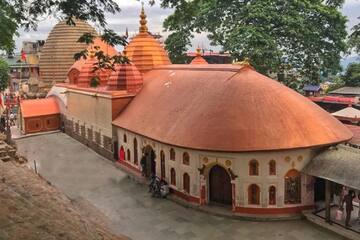How to Reach
Guwahati is situated on the southern bank of the mighty River Brahmaputra flowing in the Kamrup district of Assam. It is one of the fast growing premier cities in India. This place is admired for being the gateway to the North-Eastern states of India and a principal centre of socio-culture, political, industrial and trade & commerce of the entire region.
Guwahati offers a number of travel options for local as well as foreign visitors. One can enjoy convenient and high quality air, train and road services for travelling across India from here.
By Air
The commercial city of Guwahati is well connected with the rest of India by air and land. The Lokapriya Gopinath Bordoloi International Airport is situated at Borjar, 20 km away from the city. Helicopter services are operated from Guwahati to Shillong, Tura, Naharlagun, and Tawang. The city is connected with the other major cities of India by different airlines.
Once in a week, Air India operates direct flight between Guwahati and Bangkok. Indian airlines, Sahara, Jet, Kingfisher, Indigo operates regular flights to Guwahati. There are regular flights to other cities like Jorhat, Lakhimpur, Tezpur, Dibrugarh also.
By Train
North Eastern Railway zone of the Indian Railways is the railway connection between Guwahati and the rest of the country. Guwahati Junction is the head quarter of the zone
By Bus
The Inter State Bus Terminus (ISBT) located at the outskirts, provides connectivity with other regions of the Northeast with regular buses for major cities and tourist destinations of the neighbouring states. Guwahati is also well connected by road with the rest of the country.National Highway 31 and 37 are the two road connections to Guwahati.Guwahati is well connected with rest of the State by ASTC services and many private transport systems.
About Assam

Assam is situated in the North-East of India and is the largest northeastern state in terms of population while second in terms of area. Assam covers an area of 78,438 km2 (30,285 sq miles). The state is bordered by Bhutan and the state of Arunachal Pradesh to the north; Nagaland, Arunachal Pradesh and Manipur to the east; Meghalaya, Tripura, Mizoram, and Bangladesh to the south; and West Bengal to the west. A significant geographical aspect of Assam is that it contains three of six physiographic divisions of India – The Northern Himalayas (Eastern Hills), The Northern Plains (Brahmaputra plain), and Deccan Plateau (Karbi Anglong).
Page Statistics
- Total Views: 56836
- Content Last viewed on: 22-Dec-2024
- Last updated on: 19-Oct-2022
